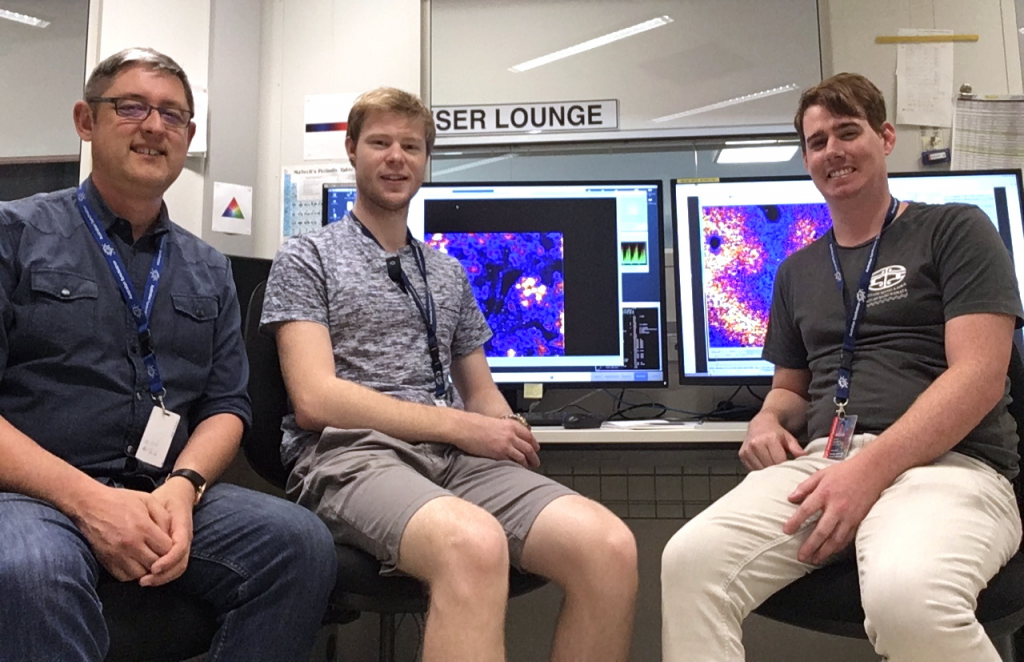Wondering what has these three Curtin Health Innovation Research Institute researchers beaming? Conducting research at the Australian Synchrotron of course.
Dr Ross Graham, PhD student Clinton Kidman and research assistant James Chasland recently visited the X-ray Fluorescence beamline at the Australian Synchrotron in Melbourne as part of their research into links between iron and fatty liver disease.
Along with CHIRI’s Associate Professor Cyril Mamotte and Dr Mark Hackett, the trio is investigating the distribution of iron and other metals in liver cells exposed to high concentrations of iron and fatty acids.
Their aim is to better understand the underlying mechanisms of non-alcoholic fatty liver disease and iron overload disorders and the link between them. These disorders manifest largely in middle age and may cause complications such as liver failure if untreated.
The research is an offshoot of Clinton’s PhD project and is supported by a $102,000 grant from the Australian Nuclear Science and Technology Organisation awarded to the team in 2018.
With the diseases and disorders presenting a growing problem for Australia’s ageing population, the team’s determined to help find better treatments for patients with fat and/or iron build-up.
This work is a follow-up to the team’s research measuring fat accumulation under the same conditions at the synchrotron’s Infra-Red beamline in July last year.
The use of synchrotron science is allowing the team to measure and capture the concentration and distribution of fat and other organic molecules in the liver at a resolution and sensitivity not possible with other techniques.
The fluorescence image on the left was captured through their most recent work at the synchrotron and shows the distribution of iron (red) and zinc (green) in a single cell.
You can read more about how CHIRI’s using synchrotron science to progress research into a range of age-associated diseases in this flyer.

